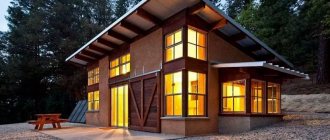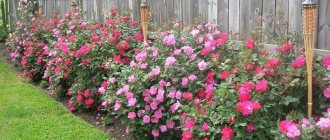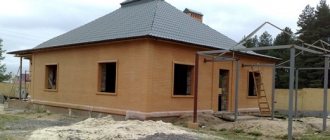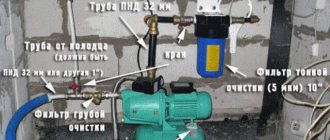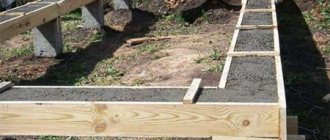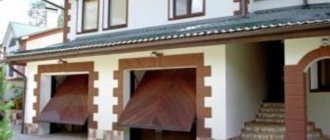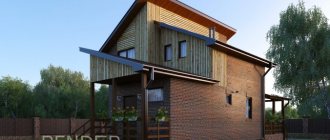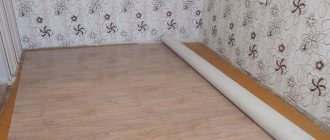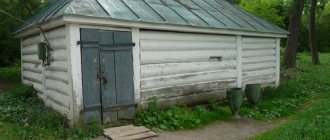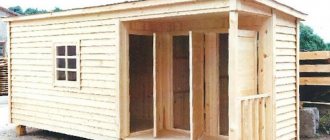An exploitable roof is a roof that is used not only as an external enclosing structure and protection from precipitation, but also for other purposes. Here are some options for what you can do on a horizontal roof:
- recreation area, lawns, flower garden;
- greenhouse or winter garden;
- children's or sports ground;
- summer cafe;
- pool;
- parking;
- helipad.
The roof in use is distinguished by a durable coating that can withstand the loads from the movement of people, the installation of furniture, equipment, and various structures on it. The waterproofing is located under the coating and is reliably protected from damage.
The strength of the floors must correspond to the type of use of the roof. For some applications, it is important to ensure reliable noise and vibration absorption. The strength of load-bearing walls is also important, especially for cases of high load (swimming pool, helicopter, parking).
Sufficient strength of the floors and protection of the waterproofing layer are the main features of the roof in use. When the roof is not in use, they climb onto the roof only for its maintenance, repair, and maintenance of structures located on it, for example, ventilation caps, antennas, overhead power lines, and cable lines.
How to make a roof for an extension to a house
A lightweight roofing structure, which consists of only one inclined slope, is usually called a shed roof. Let's look at how to make a roof on an extension to a house, what are the nuances and features of construction. This design includes a rafter system, gables, sheathing and finishing roofing material. A special feature of attaching a pitched roof to a house is the need to secure it to one of the load-bearing walls of the main building.
The structural elements of a pitched roof of this type are as follows:
- Mauerlat . This is the main support beam, which bears the main weight of all rafter structures and roofing material. It also redistributes the load on the load-bearing walls and foundation of the building. To lay this element, hard wood treated with antiseptics is used. When deciding to build a pitched roof for an extension to a house with your own hands, one beam of the Mauerlat is fixed on the load-bearing wall of the building, and the second is fixed on vertical supports.
- Rafters . These elements support the roofing material and transfer its mass further to the mauerlat beam. To create rafter legs, use a board with a section of 50×150 or 100×150 mm. To fasten them to the support beam, cuts are made at both ends of the rafters.
- Struts . These are additional supporting elements of the frame that support the rafter legs if the length of the slope exceeds 4 m. One end of them rests on the rafters, and the other on the mauerlat.
- Lathing . For its arrangement, boards measuring 40×150 mm are used. They are piled on top of the rafters at a certain pitch to create support for laying the finishing coating. A continuous sheathing of plywood or particle boards is used for soft roofing.
It is worth noting that the drawing of a shed with a pitched roof attached to a house can be done independently, since this design is the simplest of all possible. This does not require complex mathematical calculations. True, special attention should be paid to the method of joining the roof of the extension to the main building. It is important to ensure reliable waterproofing of the seam to avoid leaks.
Design features
A pitched roof is a lightweight structure with one slope. The main elements of a house with such a roof are a frame made of wooden blocks, sheathing made of boards, as well as the selected roofing covering. An extension to a house with an attached roof differs from a free-standing structure in that one of the sides of such a structure is securely fixed to the load-bearing wall of the building .
The structure of a frame of this design includes:
1. Mauerlat or wooden beam, which serves as a support for the rafters. This product is made from hard wood and treated with antiseptics to prevent rotting and mold. The Mauerlat supports the weight of the entire roof; this element serves to evenly distribute the loads on the walls of the building. In this place, the connection between the roof of the house and the extension takes place, with one Mauerlat securely fixed on the wall of a private house, and the second bar laid on the support pillars.
2. Another equally important element of the described structure is the rafter legs. Such parts are made from wooden beams with a cross-section of 5*15 or 10*15 centimeters. A notch is made at the edges of the rafters for attaching to the Mauerlat. The rafters support the entire roof covering.
3. To strengthen the rafter legs, a brace is used, especially if the length of the slope exceeds 4 meters (in this case there may be several such parts). One of the sides of the strut is fixed to the mauerlat, the second rests on the rafter leg.
4. Many people do not know how to connect the rafters; lathing serves this purpose. Such structural elements are made in the form of boards 3-4 centimeters thick, the width of which corresponds to 15 centimeters. When constructing a deck, the boards are distributed at a certain pitch. If rolled materials are used for the roof, the sheathing is made continuous. For this purpose, moisture-resistant plywood is used.
You should pay attention to the following fact: the gable roof of an extension to a house is quite difficult to implement, so many choose the single-pitch option and make such a roof with their own hands without the help of qualified specialists. The design and installation of such a structure is quite simple without complex calculations. The only nuance that needs to be paid attention to is the joining of the main residential building with the extension. Poorly installed waterproofing will cause leakage.
Design calculations and drawing of a pitched roof
Of course, in order for the finished structure to be durable and not cause problems during rainfall or the cold season, before starting construction you need to draw up a design for a shed with a pitched roof that will be adjacent to the house. In this case, it will be necessary to calculate the surface area of the slope, its slope, the length of the rafter legs and the difference in the height of the supports. All this should be included in the house roof project. Correct calculations will ensure the durability of the roof and its efficiency. You can determine the necessary parameters using ready-made calculator programs or using formulas.
Manually, the required quantities are calculated as follows:
- The angle of inclination of the roof is determined by dividing the difference in the height of the support pillars by the width of the structure. As a rule, it is within 15-40º and is determined based on the weather conditions of the area and the requirements of roofing material manufacturers.
- For a given slope slope, the difference in the heights of the support pillars can be calculated by multiplying the angle by the width of the extension. These parameters are calculated so that when constructing a pitched roof for an extension to a house, the required slope can be maintained.
- To determine the length of the rafters, it is necessary to divide the difference in the height of the supports by the sine of the slope of the slope. The resulting value will allow you to calculate the amount of material required to create a rafter system for an extension to a house.
- You can calculate the surface area by multiplying the length and width of the slope - the parameter is used to determine the amount of roofing and waterproofing materials for the roof. Please note that you need to purchase them with a 15-20% margin for trimming and overlaps.
The weather conditions of the area significantly affect the durability of the roof. So, if significant snow loads are expected, it is better to make the slopes steeper, and if windy weather prevails, flatter, with a slope of less than 15º.
Advantages and disadvantages of flat roofing
Let's look at the pros and cons of a house with a flat roof.
Let's start with the advantages:
- Saving materials and time. The smaller area of the horizontal platform compared to inclined planes saves roofing materials. A horizontal roof is structurally simpler than a pitched roof, since it does not require a rafter system. A simple design means reduced construction time, reduced labor costs and, again, savings in materials.
- Safety. There is no water dripping from a flat roof with internal gutters, no snow hanging, and icicles do not freeze on its edges. These qualities are especially valuable for multi-story buildings.
- Easy to maintain. A flat surface is easy to work on and allows you to place tools, materials and equipment.
- Additional area. A flat roof provides the homeowner with a considerable area, which can be used at his own discretion: install ventilation equipment, air conditioners, antennas there, or arrange an operating area on it.
- Simplicity of roofing over a large area. Many modern buildings, such as shopping centers, or industrial workshops have a very large area, measured in thousands of square meters. A pitched roof for such a building would be too complex and very difficult to maintain.
Now let's move on to the disadvantages:
- Increased requirements for strength. The horizontal floor bends, like a bridge beam. The weight of the equipment placed on the roof is added to its own weight. The snow load is also higher than for steep slopes, since snow accumulates there all winter.
- High requirements for waterproofing tightness. With a small slope, flowing water can penetrate through the seams of the insulating material, so they must be sealed and their condition must be monitored.
- Possible difficulties with water drainage. Such difficulties arise on roofs with internal drainage. The intake funnels can become clogged with leaves or frost, which can turn the roof into a swimming pool.
As you can see, the disadvantages of flat roofs are rather technical features that will not create difficulties with proper design and careful execution.
What materials are needed for a barn roof?
Let's think about how to cheaply cover the roof of a barn to reduce costs. The most reasonable thing from the point of view of safety from wind and heavy rainfall would be to build a shed with a pitched roof, since fairly inexpensive materials will be needed. In addition, you will not have any problems purchasing them - everything is freely available in stores. And the number of consumables will be much less than for roofs of a more complex design.
During the construction of the roof of an extension to the house you will need:
- Wood . You will need pine beams with a cross-section of 100×100 or 150×150 mm, edged boards 50×150 mm, unedged boards 40×150 mm and a lath with a cross-section of 25×50 mm for the construction of the rafter system. The moisture content of the material should not exceed 15-16%, and its surface should be free of chips, cracks and stains. Using deep penetration antiseptics, you can avoid rotting and mold formation due to penetrating moisture.
- Roofing covering . You can select a suitable material in terms of quality and cost from a wide range of varieties on the market. A budget option would be slate, corrugated sheeting or roofing felt. A higher quality and visually presentable material – soft roofing, ondulin, metal tiles – will cost twice as much. If we are talking about covering a winter garden, greenhouse or veranda, you can use polycarbonate - a transparent material that perfectly transmits sunlight, a thermal insulating material.
- Waterproofing . This layer is designed to protect the wooden truss system of the roof of the extension from moisture penetration and, as a result, damage to the structure. For this, roofing material, film or diffuse membrane can be used. However, in practice, roofing material has shown itself to be the best, since it is the most durable of the above.
- Fastenings . There are many options for fastening consumables when installing a roof - self-tapping screws with rubber washers, nails, anchors, metal corners. In the case of self-tapping screws, their consumption per 1 m 2 of area is about 10 pieces. So, to calculate the quantity, the consumption rate must be multiplied by the area.
Please note that choosing a roof covering similar to the main building will make the extension a harmonious continuation of the house. However, if this is not possible due to financial capabilities, it is worth choosing a material that is as close as possible in color. The choice of lightweight materials (ondulin, roofing felt or corrugated sheets) will make it possible to create a lightweight, simple frame.
Roofs from Ondulin
The sloping roof made of green Ondulin harmoniously complements the architecture of wooden frame houses built in a rustic style. Natural tones of light or dark wood combine pleasantly with all shades of green and blend seamlessly into the surrounding landscape. White frames of window openings refresh the dark color scheme of the facades in the photo and add accent touches to the design of the house.
The combination of lining on the facades and roofing from Ondulin is one of the most cost-effective options for finishing a private house. The corrugated surface of the walls to some extent echoes the wavy profile of Ondulin - and this gives integrity to the exterior of the building, despite the pronounced color contrast between the terracotta-red roofing and the white wall cladding. Such a solid sloping roof, the color of which is much darker than the façade finish, adds solidity to the surroundings of the house.
The ease of installation of sloping roofs from Ondulin allows you to implement quite complex structures, one of which you see in the photo. Here the roof not only has two slopes with a slight bend, it is also equipped with additional, flatter slopes that help drain heavy rainfall without an avalanche. In addition to structural practicality, the roof made of brown Ondulin in the photo effectively sets off the sandy-yellow facades of the house.
See also: Ondulin: Beautiful photos of house roofs, types of roofs
Methods for constructing a roof structure with your own hands
So, if you decide to build the roof of the house extension with your own hands, after designing and purchasing materials, you can begin construction. To work, you will need a hacksaw or grinder, a screwdriver, a plane, a drill, a stapler, a ruler, a marker and some string.
Construction is carried out in several stages:
- Using anchor bolts or metal studs, the first Mauerlat beam is installed on the load-bearing wall of the house. The rafter legs will be laid on it, so the fixation must be reliable.
- The second beam of the Mauerlat is mounted either on the load-bearing wall of the future extension or on support posts. Their height must be lower than the main load-bearing wall of the house to ensure the required roof slope. The beam is fastened on the posts with studs, and on the load-bearing wall with anchor bolts.
- Next, the calculated number of rafter legs of the same length is made and cuts are made in each of them for laying on the mauerlat. The outer rafters are attached first, then a cord is pulled between them, and all the remaining legs are attached to this level.
- Waterproofing is laid over the rafters. The roofing material at the junction of the extension with the main house is brought 15-20 cm onto the wall and melted to it using a gas burner.
- The waterproofing layer is fastened with a counter batten nailed to the rafters. The main sheathing under the roofing material is mounted perpendicular to the counter-lattice in increments of 10-15 cm.
- The last step will be laying the roofing covering on the sheathing. You need to start the flooring from right to left and from bottom to top, laying sheets with an overlap of 10-15 cm. On flat roofs, the overlap of the material is increased, and the joints are additionally coated with a sealing compound.
It is worth noting that the movement of water along a pitched roof will only occur in one direction, therefore it is necessary to install high-quality gutters. Lastly, you can begin insulation work and the final filing of the gables.
Installation of the rafter system
The first step in building a roof is installing the rafter system. The rafter system can be triangular in shape or located at different levels of the building. The choice of rafter system does not affect the quality and stability of the structure; these parameters are equal in both cases.
The triangular rafter system is characterized by a large amount of lumber costs, because it includes beams, posts and rafters. Its advantages include ease of installation, which is due to the ability to mount the structure on the ground, and then, using winches, lift it to the required level and carry out installation work. Also, this type of rafter system does not require building up load-bearing walls. You can see an example of a roof with a triangular rafter system in the photo below.
A rafter system located at different levels of a building, on the contrary, requires an increase in load-bearing walls, because The rafters should rest against them to strengthen the entire structure as a whole. The advantage of this method of roof construction is the low consumption of lumber.
To attach the rafter legs, supports and slopes are used, the number of which is influenced by: the weight of the rafter leg, the slope of the slope, the total length of the leg, the distance between the roof and the wall, as well as the thermal insulation layer and roofing material.
Shed with pitched roof 3x6
The first building that appears on a new summer cottage is, of course, a barn, large and roomy. At first, until the bare territory of the dacha is “overgrown” with full-fledged outbuildings, a house, a summer kitchen and a garage, a simple shed with a pitched roof will long remain the only shelter for equipment, building materials and dacha property.
Related article: How to cover a roof with slate with your own hands
Which type of shed to choose for your summer cottage?
Depending on the plans for the future development of the suburban area, the availability of free time and money, the problem of utility room on a suburban area can be solved in several ways:
- Hire a team and build a permanent shed from brick or foam block, with a pitched roof and a basement;
- Pour a concrete foundation for the future building with your own hands, buy a five-ton railway container and install it on your summer cottage instead of a barn;
- Build an ordinary barn with a pitched roof, 3x6 in size, from timber and boards, as in the photo.
Of course, experienced summer residents with experience will without hesitation cast their votes in favor of the last option; this is the most balanced and thoughtful decision.
In addition, the construction of stone, prefabricated, panel sheds, as well as the purchase of a container, will require an order of magnitude greater investment and time than is necessary for a wooden building with a pitched roof and a simple foundation. The main thing is that, at considerable expense, there are no tangible advantages over a lean-to wooden shed measuring 3x6.
Optimal design of a 3x6 wooden shed
The most difficult element of a homemade shed is its roof. Choose a pitched roof for your shed, you can’t go wrong. Even experienced craftsmen prefer to install pitched roofs on barns; they are not as beautiful, but easier to build and more reliable in operation. Moreover, you can make a shed roof with your own hands step by step even with minimal construction experience.
The only mandatory condition is the correct orientation of the pitched roof and the entire shed building relative to the wind rose in order to reduce the risk of rainwater flowing under the upper overhang and gables of the roof:
- The design of the barn, dimensions 3x6 m, with a pitched roof is shown in the drawing;
- The construction is carried out on a simple columnar foundation of 12 supports. A standard cinder block is used as the material for the pillars, but it is better to cast the supports from concrete in the formwork;
- The basis of a lean-to barn is a frame made of boards and timber, the dimensions of the structure are 3x6 meters, with a ceiling height of 2 m and the highest point of the rafters of 2.7 m;
- The shed roof is made according to the classical scheme, on hanging rafters with stuffed sheathing boards and a flat roof. As a roofing covering, you can use corrugated sheeting, ondulin, or make a two-layer version from rolled material, for example, roofing felt.
The construction will be very simple and easy; if you assemble the foundation correctly, the wooden frame box with a pitched roof can easily withstand winds of 18-25 m/s. If there are no strong winds in the area in which the shed is planned to be installed, then when building walls you can limit yourself to vertical drains from boards and timber, as in the drawing. For open areas, it is recommended to strengthen the vertical load-bearing supports with side struts, as in the photo.
The same applies to the design of a pitched roof. For a quiet area, you can build a pitched roof without using ceiling beams, but in this case, the upper frame of the walls and the mauerlat will need to be supported with additional vertical supports made of timber. For windy areas, a pitched roof must be reinforced with floor beams and supports in the middle of the rafters.
We build a barn with a pitched roof with our own hands
You can calculate the amount of material needed for the frame and pitched roof. To build a 3x6 shed, six-meter boards are used:
- For the frame, material with a cross section of 50x150mm - 14 pcs., 25x100 - 23 pcs., 50x100 - 19 pcs.;
- For the floor, boards measuring 25x100 mm - 27 pcs.;
- For the sheathing and roof supports, 43 boards with a section of 25x100 mm are required.
All joints and connections are made with black carpentry screws 50 mm, 70 mm and 110 mm. To reduce the cost of construction, you can use ordinary nails and construction angles, but such savings are not always justified.
Making a foundation for a 3x6 shed
After choosing a site for building a shed, you will need to plan and remove soil on an area of at least 3x6 m in size. It makes no sense to make a larger building area. To prevent vegetation from pestering you, the cleared space can be covered with salt and sand.
After marking the location of the supports, at the installation points of the pillars we dig 12 holes, 15 cm deep and the size of a standard cinder block. At the bottom of the mini-pits we pour a 5 cm layer of a mixture of crushed stone and sand, after which we lay out columnar supports from cinder blocks using masonry mortar with the addition of PVA.
Before laying out, you will need to pull horizontal cords, along which you can control the height of each support, so that the entire supporting surface of the pillars is in the same horizontal plane.
After a day, you can install the strapping beam. All corner joints and T-shaped mortises are made with the ends “half-timbered”, each connection is reinforced with self-tapping screws screwed into the beam at different angles.
Assembling the frame and pitched roof
At the next stage, you will need to install load-bearing vertical posts; they are highlighted in orange in the drawing. Next, we sew up the floor and lay the rafters of the pitched roof.
We make the central load-bearing racks from 50x100 boards, for the rear wall you will need to cut three 220 mm racks, for the front wall - four 250 mm racks. We first fix each support on the lower frame with one self-tapping screw, then set the exact horizontal position according to the building level and additionally fasten it with small half-meter struts, as in the photo.
After all the racks are installed, we strengthen them with additional temporary struts and tie the upper tier of the frame under the future pitched roof. To give the entire structure of the barn additional rigidity, before assembling the elements of the pitched roof, it is necessary to cover the floor with a tongue-and-groove board.
Related article: What to make a transparent roof on the veranda from
Next, all installed elements, floor boards, rafters, sheathing material, side posts, lower and upper trim must be treated with an antiseptic and preservative. During the time it takes to assemble the rafters and roof of the pitched roof, the procedure must be repeated twice.
For the upper overhang of a pitched roof, installation of rafters and sheathing, you will need to secure an additional horizontal beam of the mauerlat, as in the diagram.
The cutting of the seat on the rafter beam is carried out according to the markings or according to a prepared template. After installing and leveling the position of each beam, it is recommended to fill the space between the beams with short boards; they will fix the rafter from horizontal displacement and at the same time strengthen the base of the pitched roof.
Roofing and finishing works
At the final stage, we sew up the rafters of the pitched roof with a sheathing board. If bituminous materials - flexible tiles and roofing felt - are used for the roof of the barn, additional OSB sheets will need to be laid on the boards or the sheathing will need to be completely hammered in with wooden clapboard.
The easiest way to cover a pitched roof is with corrugated sheeting. The metal surface will withstand any disasters that may occur in a summer cottage, and laying and fastening roofing material is much easier and faster than euro-slate or roofing felt. A polyethylene film is laid as waterproofing, the edges of which will be released from under the awnings and nailed to the top edge of the wooden walls of the barn.
Laying the roof on a pitched roof begins with the bottom left sheet, as in the diagram. Each element is joined to the previous one in a row in an overlap of two waves, an overlap of 15-20 cm is made on the bottom sheet. The overlap areas, the lower and upper edges must be pierced with roofing nails with a silicone washer.
Wind strips are nailed to the sides of the roofing pie, protecting the pitched roof from water flow and gusts of wind. We nail a similar strip for installing a drainage gutter under the lower overhang. We protect the upper overhang of a pitched roof with a screen made of two wooden planks.
The assembled frame of a shed, as a rule, is not insulated for the winter, so lining, ordinary edged boards or OSB sheet panels can be used as a material for lining the walls. To install the cladding, you will need to install additional vertical slats and struts on the walls. The joints and cracks between the OSB boards and the edged boards must be blown out with polyurethane foam, excess polyurethane foam must be cut off and painted over with weather-resistant paint.
Shed with pitched roof 3x6
It is difficult to imagine a country house or dacha without outbuildings. Gardening tools, summer swings, hammocks and folding furniture are stored in the sheds; farm animals and poultry can also be housed here, hay and feed can be stored. As a rule, outbuildings are constructed from materials that remain after the construction of the house. The owner can only choose a drawing of the barn, decide on its size and roof structure.
Barn construction
The most optimal size for an outbuilding is 3x6 meters. This area is even enough to build a summer shower and toilet inside the building, and you can also arrange a summer kitchen here.
You can make a drawing of a shed using photos found on the Internet, or come up with your own original shed, and then transfer the idea to paper. It is not recommended to build even the simplest buildings without a drawing. After all, all the dimensions and inconsistencies will become visible on paper.
The roofs of barns are most often made pitched. A flat roof retains too much precipitation and snow masses and requires careful waterproofing. Roofs of complex shapes are also inappropriate for sheds, because this building is not intended to decorate the site, but to serve household needs.
The optimal solution for a shed would be a pitched roof. Unlike a gable roof, there is no need to install a ridge; you will need half as many rafters. It is easier to assemble a pitched roof, and precipitation and snow disappear from it very quickly, without threatening the waterproofing.
The optimal value of the pitched roof angle is 18-25 degrees.
The walls of an outbuilding can be erected from absolutely any materials, it can be:
- brick;
- foam concrete or aerated concrete;
- boards;
- plywood or MDF mounted on a wooden frame (frame type building).
Finish coating
When arranging a flat roof on wooden beams, one should not forget that this option is a fire hazard and has limited load-bearing capacity in comparison with metal and brick structures. The best waterproofing agent in this option is a polymer membrane, and hot installation is not for timber.
As a rule, the flooring on a roof in use is laid on a ready-made waterproofing layer. When choosing a material you should consider:
- lightness of finishing materials;
- the weight of the flooring must be uniform to avoid damage to the waterproofing;
- the coating must be ventilated to avoid the “steam room” effect;
- the possibility of disassembly if there is a need for access to the waterproofing layer;
- the characteristics of the material must be suitable for “street” use - withstand weather conditions, precipitation, etc.
For the finishing coating of a flat roof, it is advisable to choose the lightest materials with high qualities of strength and durability.
Most suitable:
- soft polymer membrane – service life up to 50 years;
- decking – lightweight tile modules with a wooden top layer, non-slip, safe, this is an excellent option for a used flat roof;
- terrace boards, WPC profiles – improves the appearance, it is pleasant to walk on barefoot, wear-resistant;
- paving slabs made of rubber and polymer materials are lightweight, durable with an impressive appearance.
Innovative developments are constantly expanding the list of materials for improving roofing, including flat ones.
Shed made of foam blocks
If you need to buy materials for building a shed, it is better to opt for foam concrete. Porous blocks have many advantages over other building materials:
- do not burn;
- do not absorb moisture;
- are light in weight;
- There are several standard sizes, from which it is easy to choose the best option for a small building;
- have higher strength and heat capacity than bricks;
- can allow air to pass through no worse than wooden walls;
- absolutely safe and non-toxic.
Despite the lightness of foam blocks, it is imperative to build a foundation for the shed. Considering the size of the building (3x6) and the weight of the structures, it is better to choose a strip foundation. For stable, dry soils, a columnar base is also suitable.
A strip foundation for a small outbuilding is poured to a depth of about 40-60 cm, and it is necessary to take into account the depth of soil freezing on the site in winter.
The ground at the site chosen for construction is cleared of debris, roots and vegetation. They mark the perimeter of the barn and dig a trench for the strip foundation.
A “cushion” of sand, crushed stone and gravel is poured into the bottom of the trench and compacted thoroughly. Now you need to secure the formwork for the foundation from old boards, plywood or slate. Metal reinforcement is installed inside the boxes, which should strengthen the foundation.
Concrete is poured. The solution is pierced in several places with a metal pin, ridding the foundation of excess air. Now you need to leave the foundation for several weeks so that the concrete can gain the necessary strength.
Once the concrete has dried, you can begin building the walls. First lay out the bottom belt.
In accordance with the building drawing, the walls are laid out, making window and door openings. The outbuilding box made of foam blocks is ready.
Wooden barn
Much more often it turns out that the owner has leftover wood, and he decides to build a wood shed. For such work, at least minimal carpentry skills are required, because you will have to work with both a saw and a plane.
A building made of wood weighs very little; a columnar foundation can serve as its base. To do this, markings are made on the site, transferring the perimeter of the future building to the ground.
Posts are installed at the corners of the barn. Several more supports should be located in the center of the rectangle. The distance between the supports is 80-120 cm (depending on the size of the shed and the type of soil on the site).
The depth of the supports depends on the level of soil freezing in the construction region; on average, it is 40-60 cm. After the trenches for the supports are dug or drilled, wooden formwork is installed in them, a sand and gravel “cushion” is filled in, and metal reinforcement is laid.
Related article: How to get rid of hornets under your roof
Now you need to pour the concrete. After 5-6 days, when the foundation has hardened, you can dismantle the formwork and begin building walls.
First, you need to make the bottom frame of the building from timber. Before laying the wood, the foundation supports are covered with a double layer of roofing felt. At the corners, the timber is connected with metal brackets and checked for level.
Install vertical supports in the corners of the barn, always checking the level. They are fixed with temporary spacers. Taking into account the door and window openings, the entire frame of the barn is assembled from wooden beams.
After assembling the frame, they begin covering the walls. This can be done with boards, moisture-resistant plywood or other sheet material.
Useful tips from builders
- Before assembling the frame, prepare the beams for joining together. The most convenient and simplest half-tree. To do this, mark with a pencil and carefully cut out unnecessary parts. Then remove excess with a chisel;
- In order not to catch splinters, it is better to process the wooden parts with a plane on all sides;
- It is better to fasten the floorboards to the base at an angle. So, then it will be possible to level them with a plane and avoid cuts during operation;
- To work on the roof, use scaffolding/scaffolding rather than a ladder;
- It is better to strengthen the openings with additional boards;
- Use antiseptics with color to see painted areas;
- Before installation, check the rafters individually and cut out holes based on actual data.
As you can see, the barn is structurally simple and requires only basic carpentry skills. Therefore, having a drawing along with instructions, building a shed will not be difficult, even if you are building it alone.
Installation of a barn roof
Assembling a shed roof with your own hands step by step consists of the following steps:
- Installation of the mauerlat - a load-bearing beam that serves as the top frame for the walls, as well as support for the roof rafters.
- Making patterns for rafter legs. All rafters for a pitched roof are the same, so first one piece is made, which serves as a template for cutting out the rest. For a 3x6 shed roof, eight rafter legs will be enough. They are cut from 50x150 mm timber. The length of the rafters should be equal to the width of the barn plus two eaves overhangs. To prevent the walls of the barn from getting wet, the overhangs should be 40-50 cm. In accordance with these data, the beams are cut to the required length. Where the rafter rests on the mauerlat, a recess must be cut in the beam.
- The rafters are secured to the mauerlat with nails or metal staples.
- Lay waterproofing material, starting from the lowest point of the roof. This way, draining moisture will not get into the joints. The overlaps between adjacent strips must be at least 15 cm.
- Depending on the chosen roofing material, sheathing is installed on the roof of the barn. The step directly depends on what the roof will be covered with later.
- Roofing material is mounted on the sheathing. Most often, slate, flat or shaped galvanized sheets, metal profiles are used for sheds - the cost of these materials is lower than others.
Photos of finished sheds will help you decide on the type of construction and size of the utility room. But most owners of suburban areas and summer cottages choose small outbuildings, with parameters of 3x6 meters. And the roofs are made pitched; this design is easier to implement, cheaper and performs well in operation.
Selection of materials
After completing the calculation work, you can begin to select materials for constructing the roof. Broken roofs require a fairly standard approach to the formation of a roofing pie and the selection of building materials:
- The Mauerlat and purlins are made of strong thick beams with a section of 200*200 and 50*100 mm, respectively;
- Rafter legs are formed from beams 50*200 mm;
- To create counter-lattice and sheathing, boards with a smaller section of 50*50 or 20*90 mm will be used;
- To create a warm room under the roof, you will need 200 mm thick insulation, as well as hydro- and vapor barrier materials.
A broken roof and its strength depend not only on the accuracy of the calculations made and the choice of building materials, but also on the quality of the wood. We recommend choosing beams and boards of coniferous trees with a moisture content of no more than 20-22% without cracks and knots.
It is important to decide on the roofing material before starting installation work, since a number of important features of the rafter system, such as the pitch of rafters and sheathing, depend on its type. Mansard roofing is compatible with any type of roof, as it has a fairly simple geometry and does not result in a large waste of materials.
Shed roof for a barn: a budget option
For a summer resident, a shed is almost indispensable in the garden - you can store equipment, tools and even bulky items in it. Installing a shed on a foundation prepared in advance is only a matter of a few hours if you have an assistant. Its roof can be pitched or gable. The choice is only a matter of personal preference and available materials. A shed roof for a barn requires significantly less material - almost half.
This roof is tilted to one side, so the height in the barn is not the same. This is necessary to ensure normal drainage of water from the roof, but due to this, the headroom in such a shed will be limited.
A shed roof for a barn usually has a slope directed backwards, that is, the height of the facade in it is greater than the height of the rear wall.
Windows are usually located on the side of the facade. In this case, you can use natural light in the shed, for example, place a workbench under the window or grow plants in pots.
How to properly build a pitched roof for a barn ↑
A simple drawing of a shed with a pitched roof, which you can build with your own hands (photo above ) consists of the following parts:
- pitched roof,
- doors,
- small window.
How to ensure tilt angle ↑
You can achieve the desired angle of inclination in various ways.
- Small posts are attached to the top beam of the frame with nails, and ceiling beams are also attached to them with nails.
- If the width of the barn is small, it is enough to simply nail another beam to the front one.
- During the construction process, you can initially build one of the walls higher than the other - the front wall is higher than the back wall. In this case, the ceiling beams are laid directly on the frame. These roofs are usually not hemmed underneath.
Installing a pitched roof for a small shed ↑
An ordinary trailer can serve as a small shed. You can also install a pitched roof on a trailer yourself . Typically, the support for such a structure is the front beam, which is mounted on top of the front panel, and cone-shaped strips nailed from the sides to the side walls. They are screwed to the panel using single-pitch fasteners.
The roof itself in this case is a large sheet of chipboard that hangs over the side walls, protecting them from rain. The roof is raised, placed on the beam and support strips, leveled so that it overhangs the walls equally on all sides, and then nailed down.
Design and calculations
Any roofing structure, even the simplest one, requires preliminary calculations and a design, at least a schematic one.
Calculations can be performed using special computer programs or calculated using formulas.
- The slope is calculated as the quotient of the difference between the height of the support posts and the width of the extension. The slope of the slope can be 15-40 degrees.
- The difference between the height of the support posts is calculated by multiplying the width of the extension by the slope of the slope.
- To calculate the length of the rafter leg, it is necessary to divide the difference in the heights of the support posts by the sine of the angle between the slope and the base of the roof.
- Area is calculated by multiplying the length by the width.
Construction of a pitched roof for a barn: basic principles ↑
On both sides of the racks, longitudinal slats (4 x 10 mm) made of wood are mounted lengthwise, which should extend at least 20 cm on both sides beyond the ends of the walls. Transverse ceiling beams will be located on them. Thick boards of about 7–8 cm may also be suitable for this. They are laid in increments of 60–80 cm and secured with nails or special corners.
Then, from the side of the facade of the barn, a beam of the same cross-section as for the strapping is nailed. Next, logs (sheathing) are installed in increments of 50 cm. These boards begin to be laid from the high side of the facade to the lowest. The structure is also nailed down and twisted with wire in several places. It is recommended to extend up to 20 cm from the sides.
The roof of a regular shed usually has a slight slope. Consequently, during snowy winters quite a lot of snow can accumulate on them, and during heavy rains - moisture. Therefore, it is advisable to strengthen the roof of the barn in advance so that the roofing material does not quickly sag. The rafters are strengthened by adding transverse beams to the frame, which will provide additional support. It is better to set the rafter spacing to no more than 0.5–0.75 m.
Roofing material is spread overlapping on top of the logs and secured with nails to thin strips. Roofing material – corrugated sheeting, slate, ondulin – is attached on top of the roofing material.
How and how to cover a pitched roof for a barn ↑
Often, roof panels are already covered with roofing felt, which protects it from rain, dampness and moisture. If there is no special coating on them, the roof must be sheathed with roofing felt. It is cut to the width of the roof. The first strip of roofing material is placed on the very bottom edge so that it hangs about 5 cm above the wall. Fold and nail at 10 cm intervals on the inside of the roof panel using 1.2 cm galvanized large-head nails. The second strip is laid above the first - it should overlap the upper edge of the previous strip by 10 cm, and is nailed in the same way using nails. If the dimensions of the barn roof are small, then a layer of roofing material can simply be laid on it and secured with boards treated with an antiseptic.
A thin border strip is nailed to the joints of the rolls. The only exception is the bottom of the rear wall, onto which the slats are not nailed, thereby ensuring unhindered water flow.
Flat roof installation. Varieties
Flat roofs can be divided into several types:
- in the direction of flow - with external or internal drainage;
- according to the location of the waterproofing layer - traditional and inverse
- insulated and non-insulated;
- exploited and unexploited.
The direction of drainage is determined by the direction of the slopes. With an external slope, water is diverted outside, with an internal slope - from the perimeter of the house to its center, where one or several water intake units are installed with the discharge of sediment into the storm sewer through special pipes.
Internal drainage is good because water does not fall along the walls and does not create inconvenience; there are no icicles or snow sliding over the edges. To drain water, a slope is created on the roof. Its entire area is divided into several sections according to the number of drainage points, and on each of them slopes are formed directed towards the water intake funnel. The vast majority of modern flat-top buildings have internal drainage.
Insulated roofs are necessary in houses where there is no attic, and the roof is combined with the ceiling of the top floor. In such cases, a layer of insulation is placed under the waterproofing. With a combined roof, the problem of insulation getting wet arises. Water vapor from the room penetrates through the ceiling into the insulation and accumulates there due to the obstacle that is the waterproofing. This problem is solved with the help of a vapor barrier, which is placed under a layer of thermal insulation, as well as a ventilation device for the insulation. To allow moisture to escape, ventilation caps are installed on every 50 m2 of surface, connecting the insulation to the atmosphere. Such ventilation is necessary when insulating with mineral wool. If EPS is used, then it is not needed.
With traditional roof construction, waterproofing is laid last to protect all lower layers from precipitation. In this case, it is not protected from sunlight, temperature changes and mechanical damage. In this regard, inverse roofing is much more reliable. Its waterproofing is located under the finishing coating, and when insulating with EPS, it can also be located under the thermal insulation. The upper layers of the roof can be made of drainage materials that allow water to pass through, or they can partially serve as a drainage layer.
A flat roof that is in use has a coating that can withstand loads. They may be:
- asphalt concrete;
- paving slabs;
- roll covering, artificial turf;
- layer of fertile soil with grass.
The outer surface of the roof in use may not have a slope, which makes it more convenient. The main thing is that the main waterproofing has a slope. A roofing pie may have, for example, the following device:
- reinforced concrete floor (no slope);
- a layer of expanded clay that forms a slope;
- cement-sand reinforced screed;
- roll waterproofing;
- thermal insulation from EPS boards;
- drainage profiled membrane;
- layer of soil with grass.
In this design, the soil layer is laid horizontally and compensates for the slope. The drainage membrane underneath drains most of the rainwater, retaining some of it to moisten the soil. A small amount of water that has penetrated under the membrane is retained by the waterproofing layer.
The slope can be formed in various ways. For example, by installing a cement-sand screed with a given profile or laying wedge-shaped insulation slabs. The specific option for arranging a flat roof in use depends on the method of its use, the type of finishing coating and the type of thermal insulation.
